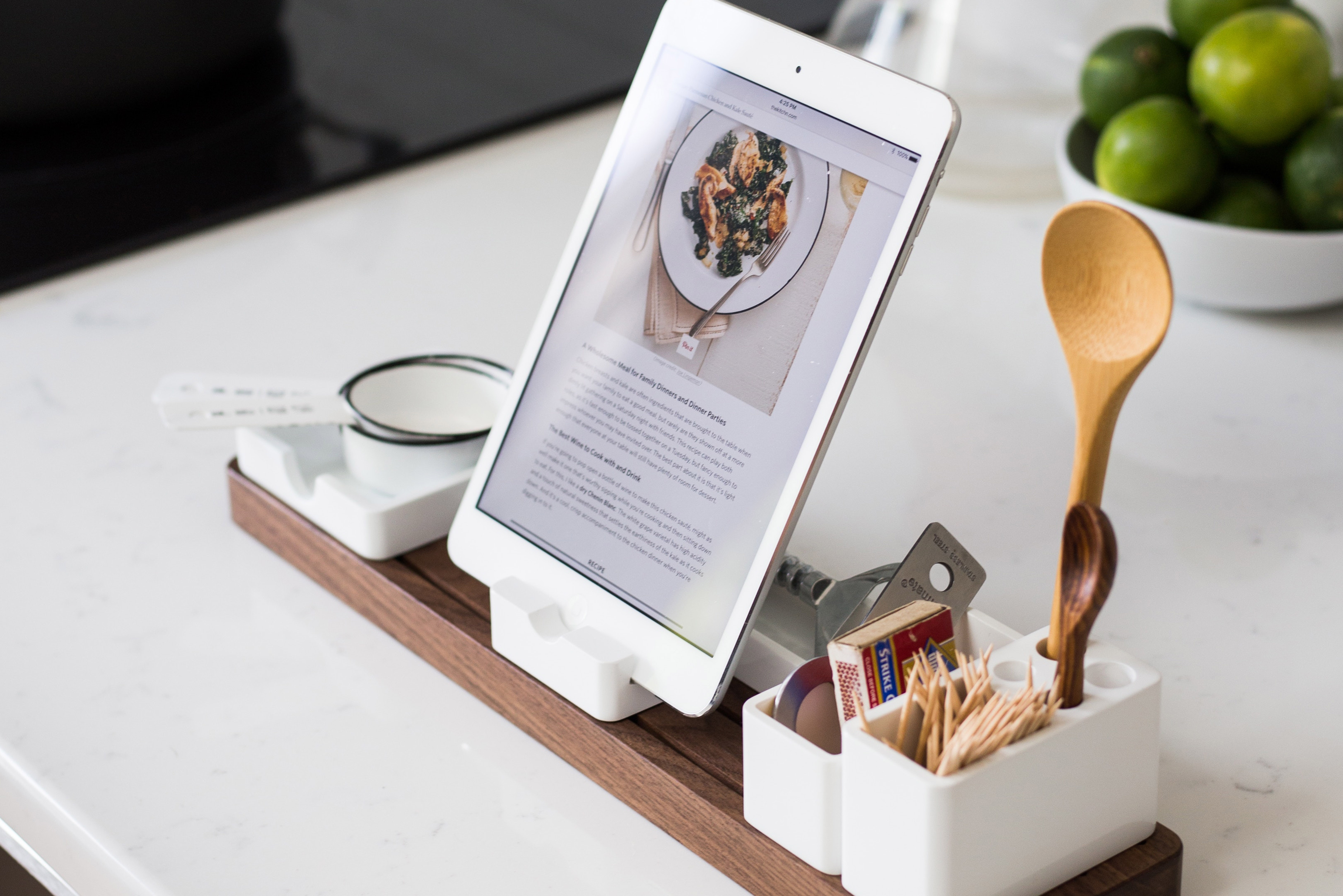The marketing landscape has changed fundamentally since the advent of digital. But now, with the rise of data-driven algorithms and the digital assistants they power, a further quantum shift is taking place that will have as big – if not a far greater - impact on brands as voice-based interaction with digital services takes over from screen.
Not so long ago, algorithms were all about making things easy for consumers to find – recommending to Amazon shoppers what to buy next based on their past behaviour and that of others who’d made similar purchases, for example.
The arrival and rapid evolution of voice-enabled digital assistants – first on mobile, such as Siri; then on stand-alone device such as Google Home - made online recommendation more immediate, reactive and engaging, however.
This was taken to a whole new level last year by Dominos and Ocado – two of the first brands to offer voice-activated shopping via an in-home device, in both cases via Alexa.
Moving forward, as people interact with an ever-expanding array of connected devices the algorithms driving next generation digital services will learn our wants, dislikes and behavioural patterns to become both our life and work coaches and also companions.

The net effect of all of this is further consolidation of in-home as a powerful new point of purchase with significant growth potential.
Recently, it was predicted that users of voice-enabled speakers (a market dominated by Amazon, with an estimated 70% market share) would grow by 130% by the end of last year. ‘Voice-first’, meanwhile, is now being tipped by some as the future of interaction with comScore now predicting that 50% of online searches now expected to be done via voice rather than screen by 2020.
A radically different marketing environment, therefore, is now imminent with brand content, products and services increasingly activated by spoken words.
Until now, the vast quantities of data generated by our digital interactions has provided brands with two options: small-scale personalised and large-scale generic brand communications. But with the rise and rise of mobile, artificial intelligence and machine learning, technology generally and cloud-based marketing techniques the potential is to create highly personalised experiences at scale.
Now, brand owners – and their agencies – find themselves at an exciting juncture with the ability to create new and compelling propositions informed by both consumers’ behavioural data (what they did, where they did it and why) and contextual data (what time of day did they do it, what was the weather like).
Next, they must prepare for – and optimise – an imminent and inevitable split between what the customers they want to reach will want and accept in different environments, notably: outside and inside the home. In the world outside the home, there will be opportunity for (and, as important, acceptance of) more personalised, large-scale brand experiences. But in the world inside – within consumers’ personal environments, notably their home and car - consumers will be more choosey, only allowing in those brands they trust and see offering clear and tangible value.
Already, we can see how digital assistants like Samsung’s Bixby – initially launched on mobile phone, but soon to be installed across a diverse range of connected domestic devices - are likely to evolve further with the interconnectivity of more devices. As they become interconnected they will be powered by more insights derived from their access to more data points and, moving forward, they will anticipate better what our needs will be.

Imagine you are trying to lose weight, for example. You access weight loss tips or diet information online. And you monitor your progress on your internet-connected scales. Then Alexa says: ‘Are you sure about that?’ when, frustrated by a difficult day at work and craving a boost, you ask her to order you a box of donuts or pizza.
So, what does all this mean for brand owners? Well, expect a fierce battle among brands to become one of the chosen few - granted access to consumers’ home environment according to the levels of trust they can generate, and the value or usefulness they can deliver. The big question they will have to answer will be: how best to create awareness outside the home then persuade their target audience to ‘let them in’?
Expect keyword optimisation to move into voice, too. And as this happens, brand owners will need to modify their optimisation techniques for people will search differently via voice than they do via screen. Via voice, search is more likely to be driven by what consumers associate with a product – ‘dry hands’ rather than ‘hand cream’, for example. And brands will need to consider more carefully their higher purpose as well as ways to make their brand rather than a generic the search criteria – for example, ‘Nivea’ instead of ‘hand cream’.
New rules of engagement, fresh challenges and opportunities will have to be mastered to get a foot in the consumer’s door in this brave new marketing world. And in order to prepare, there are a number of things they can and should be considering today.
First, each brand owner must decide what value it can offer to ensure it is allowed in. To do this it will need to decide what it should stand for in its’ consumers’ space. And it will need to understand how it should sound when interacting with its audience via a
voice-enabled digital assistant, and how that should sit within its broader brand strategy.
Many brands are already testing the water by developing Alexa ‘skills’ (Amazon’s version of apps, of which 15,000-plus are now available) and their equivalent for other platforms, which sit alongside these platforms’ list of favourite features.
Domino’s voice-activated pizza order via Alexa is one example of such a skill. Pernod Ricard’s ‘What cocktail?’, which helps millennials create drinks out of ingredients they already have by offering easy-to-follow cocktail recipes and serving suggestions from user-inputted ingredients via Alexa and also Amazon Show, is another. Both examples are simple and straight forward and offer the user something fresh and new.
Skills from many other brands, however, as less-well thought out and veer into gimmicky – which highlights the second thing brands must address: what value they can offer. A good starting point for any brand owner is to consider the potential for an idea that helps consumers decide which of your products is right for them, how to get the most out of the products they buy from you, or a mechanism to make it easier to replenish once stocks run out.
The key for every brand owner will be to offer something to make the user’s life simpler or easier, to entertain, or to surprise with a completely new service - the kind of valued-added approach now being deployed by organisations including the BBC, the Met Office and Uber.
The BBC, for example, has created a skill to plug the gaps in radio players that don’t provide all of its services. The Met Office has created a Flash Briefing skill that allows upcoming weather conditions to be outlined for local regions as part of Echo’s quick briefing system. Meanwhile Uber has developed a skill that allows the user to book a ride without touching their phone and (better still) tells you how far the closest car is and whether there is surge pricing before you accept the ride.
The third issue brand owners can - and should - get to grips with now is the need to ensure whatever they come up with is as easy as possible for the user to use and interact with. Avoid requiring the user to download anything, for example, as the more barriers you put in place the lower the likely interest and uptake. A great example of how Augmented Reality can help in this respect is a recent campaign by Shazam and Bombay Sapphire. When a user scanned the label on the bottle, an immersive animation representing the brand’s essence and character appeared on their phone.
Fourth, if a brand is going to test in this area it must be clear upfront about what it wants to learn from it, what it wants to achieve, and what success looks like. ‘First mover advantage’ does exist in this space, but a clear sense of purpose is needed to avoid being gimmicky – even if that purpose is simply to understand whether or not your customers want to interact with your brand in this way.

Furthermore, having tested the water and found the experiment worthwhile, a brand must be willing to commit to expanding and upscaling it. While it is essential not to run before you can walk, it is also critical in today’s fast-moving and highly competitive marketing landscape to start small then scale, fast.
Arguably the greatest challenge for any brand owner, however, is having not only the data but the ability to analyse that data in order to glean the insights which must inform and underpin whatever it does. Yet not all organisations are appropriately set up to manage their data in a way that will enable them to achieve this. Acknowledging from the outset whether or not you have that capability - and, if you don’t, whether or not you are willing to invest in it – must be an essential first step reality check.
Many brand owners will need help to answer questions as big as these, and they will need to take care to find the right partners to work with – partners already well-versed in latest technologies and the creative application of them, as we are through our experience of working closely with Samsung on the development of Bixby and its future potential as a powerful in-home platform for this party brands. Yet significant opportunities await for those brands who lay the groundwork now to optimise their strategies for the future.
By David Coombs, Head of Strategic Services, Cheil UK
Sources
- https://www.emarketer.com/Article/Alexa-Say-What-Voice-Enabled-Speaker-Usage-Grow-Nearly-130-This-Year/1015812
- https://www.campaignlive.co.uk/article/just-say-it-future-search-voice-personal-digital-assistants/1392459
- http://www.wired.co.uk/article/amazon-echo-skills
- https://www.thespiritsbusiness.com/2017/12/pernod-creates-cocktail-making-skill-for-amazon/
- http://www.wired.co.uk/article/amazon-echo-skills
- https://vimeo.com/241917484



